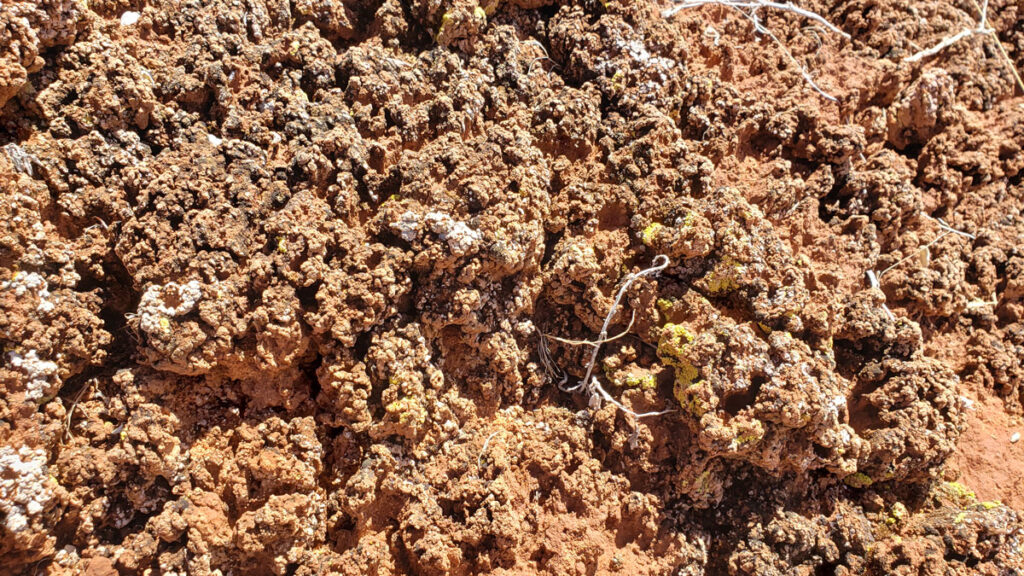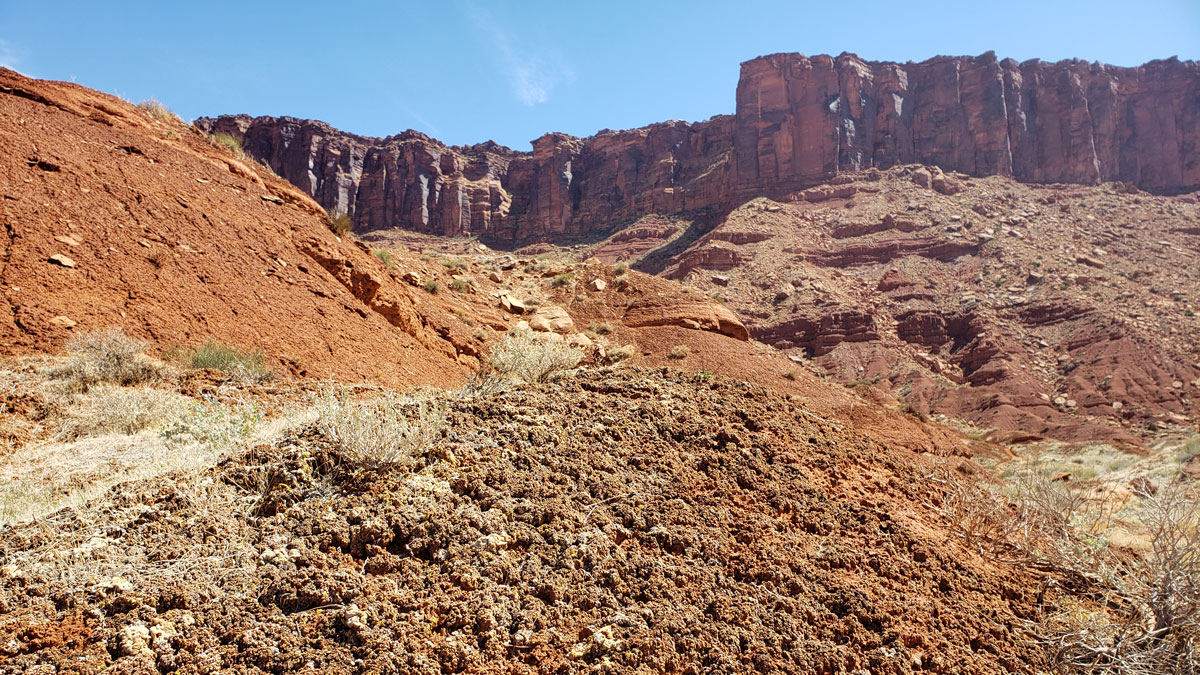Biological soil crusts, or biocrusts, are communities of living organisms at the soil surface and are known as the “living skin” of dryland ecosystems. They cement soil grains together, thereby protecting dryland soils from erosion. Biocrusts also add critical nutrients to the soil by converting nitrogen in the atmosphere to ammonia, which serves as a kind of fertilizer for plants and microbes.
Unfortunately, trampling by livestock and such human activity as driving vehicles off-road make biocrust survival difficult. New research published in the Proceedings of the National Academy of Sciences of the United States of America has suggested that there’s another phenomenon that biocrusts are sensitive to: climate change.
“It is a great asset.… Somebody was at it every day making sure the data were collected for decades. It’s just so rare and so precious.”
According to Rebecca Finger-Higgens, a research ecologist with the U.S. Geological Survey (USGS) at the Southwest Biological Science Center, the study has a long history. It originally sought to better understand how biocrust communities change over time as well as to address the dearth of studies that assessed the long-term impacts and ecology of biocrusts. “It was a really unique, long-term study started by Jayne Belnap [a USGS soil researcher] back in the nineties,” explained Finger-Higgens.
It wasn’t until years after the project started that climate change’s impacts on biocrusts in the American Southwest became a focus of the project.
Ferran Garcia-Pichel, a biocrust microbiologist at Arizona State University who was not involved in the study, described the length of monitoring as “unparalleled” for biocrust research in the southwestern United States. “It is a great asset.… Somebody was at it every day making sure the data were collected for decades. It’s just so rare and so precious,” said Garcia-Pichel.
Losing Lichens
The research was conducted on the Colorado Plateau within the Needles District of Canyonlands National Park in Utah. The protected site is one of the few remaining areas where biocrusts were not trampled by cattle. Focusing on this pristine location gave Finger-Higgens the rare opportunity to observe how biocrusts behave without any confounding effects of direct disturbance.

The researchers measured the number of lichen and moss species present in biocrusts and the extent of lichen and moss cover. On the basis of the long-term observational data set, they found that both the number of lichen species and the area of land covered by lichens decreased over time. In 1967, lichens covered close to 20% of the land area. By 2019, nitrogen-fixing lichens covered only around 5%. The lichens were partly replaced by mosses, but overall, their loss resulted in a decrease in total biocrust cover.
Increasing summertime temperatures best explained the decline in lichen cover; lichen cover was lowest in years with the hottest maximum temperatures in June.
This new research is one of the first long-term studies to provide field evidence to support the hypothesis that a warming climate is harming lichen biocrusts. However, the authors cautioned that correlation does not equal causation, and the study cannot explicitly link the decline in lichen cover to warming temperatures.
Fewer Lichens, Fewer Soil Nutrients?
Further warming might push lichens to a tipping point after which they will be permanently lost from dryland biocrusts, said Finger-Higgens. Because biocrust lichens have an important role in adding nutrients to the soil, their absence could have cascading impacts on dryland ecosystems.
However, some cyanobacteria and associated heterotrophic bacteria also add nitrogen to dryland soils, and their coverage was not assessed in the study. “Maybe cyanobacteria [cover] went up, we don’t know.… But now we have a hypothesis to test,” said Garcia-Pichel. “The data only tell you one thing. The lichens uncontroversially went down…and this goes along with an increased summer temperature.”
The scientists are continuing their work. They have already begun to test their hypothesis in Canyonlands National Park by measuring the amount of nitrogen that the lichens are adding to soils there.
But even if Southwest biocrusts can stabilize without lichens, Finger-Higgens will be sad to see them go. “Personally, I just like the lichens. I think they are pretty. There is an aesthetic value to them.”
—Derek Smith (@djsmitty156), Science Writer

